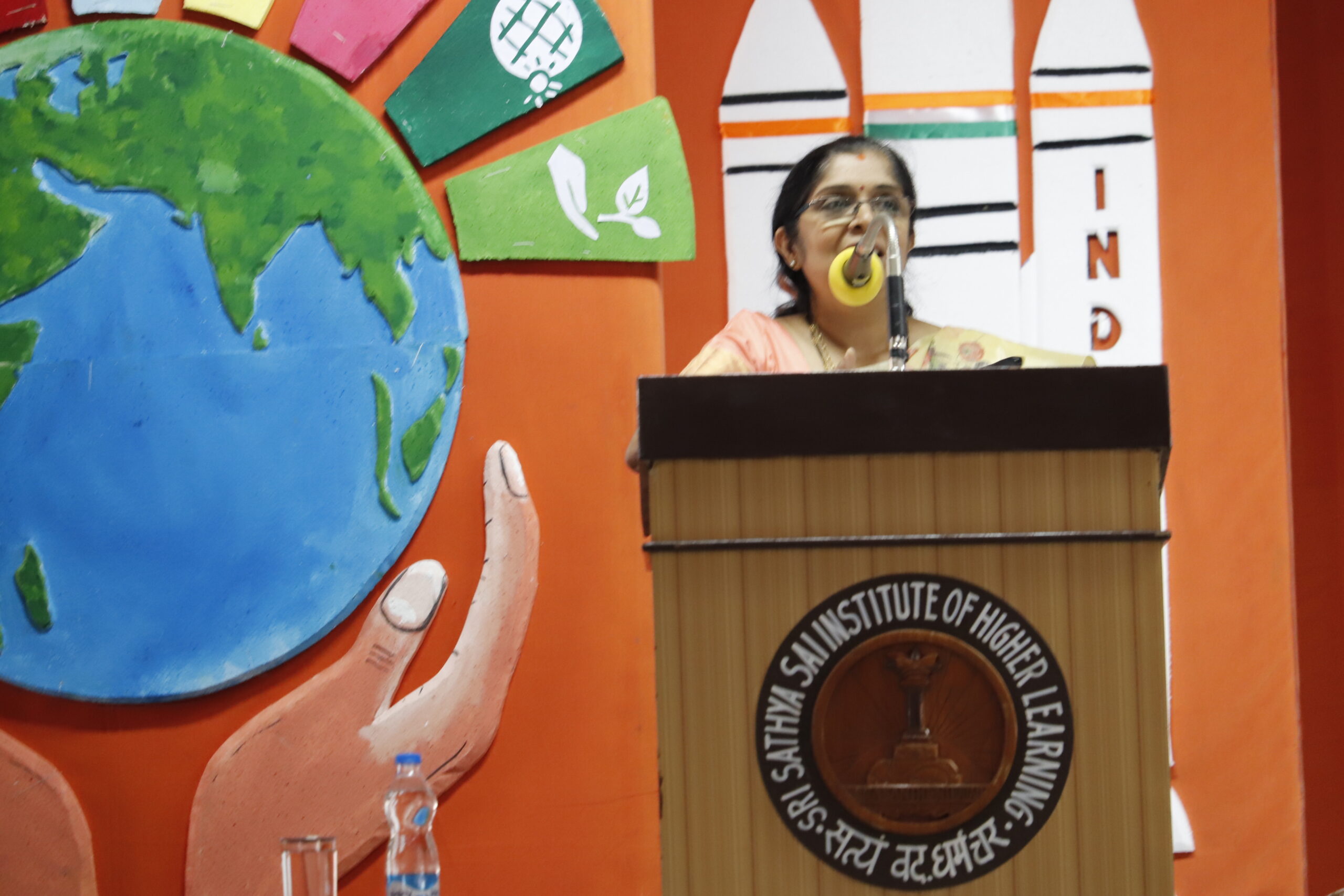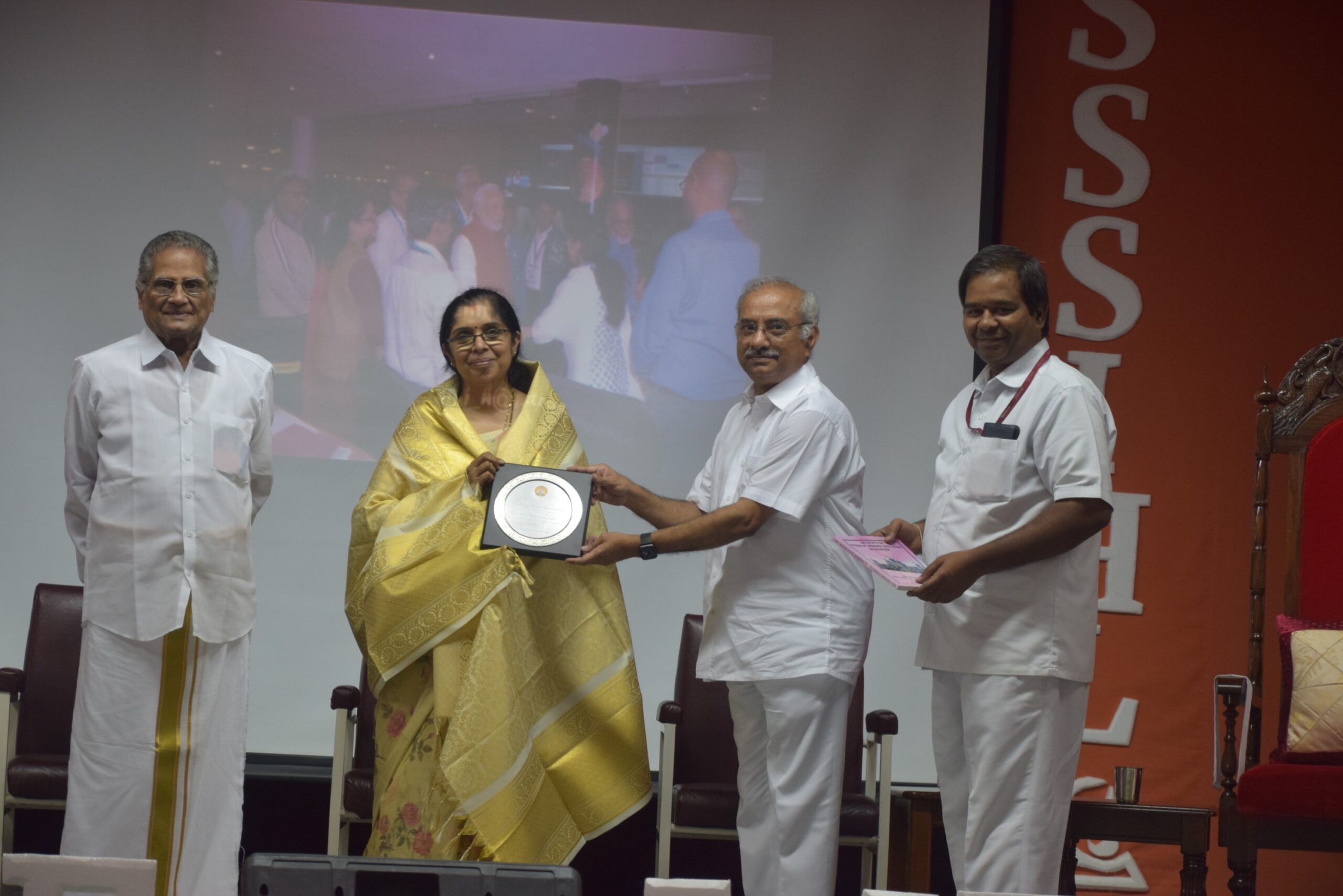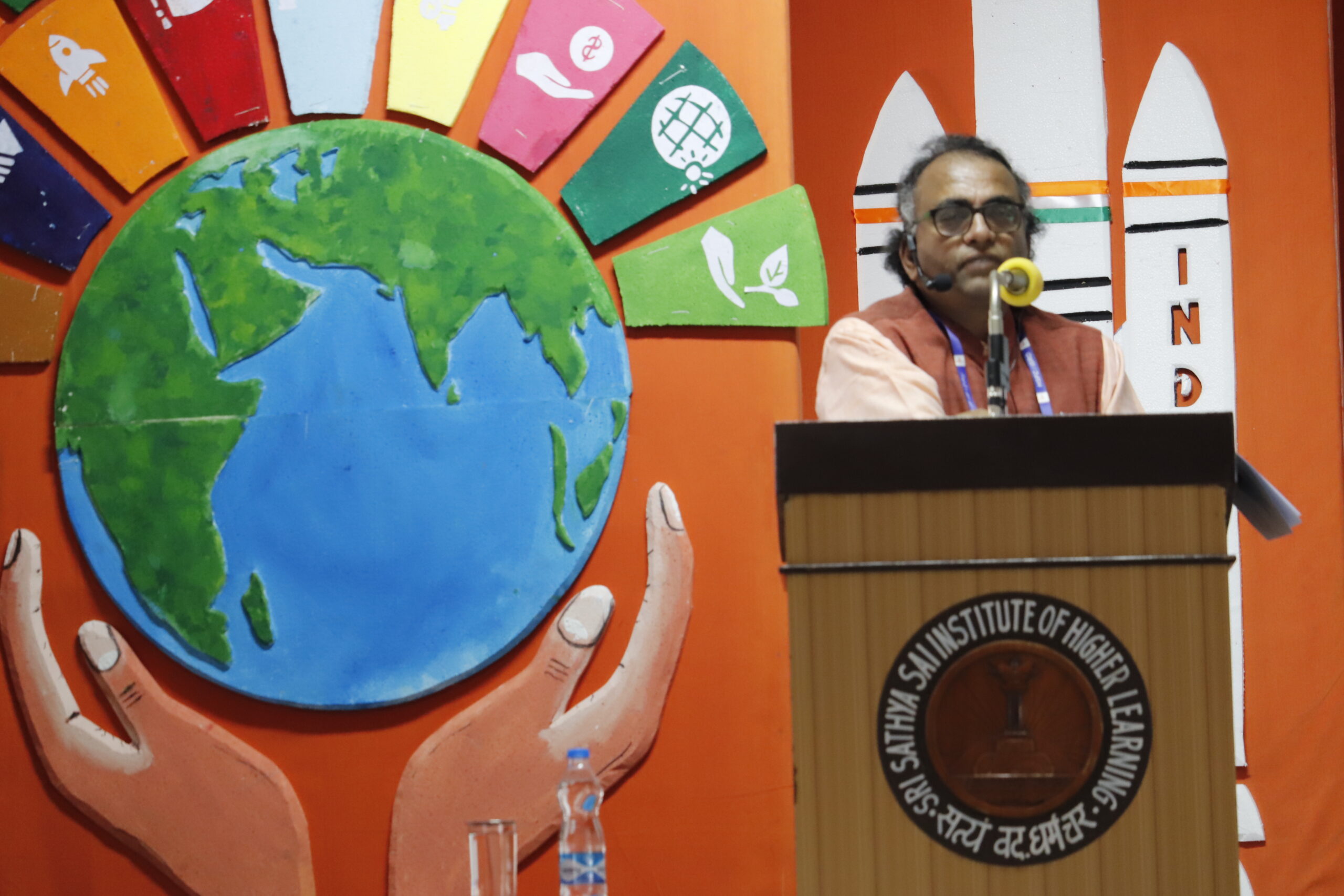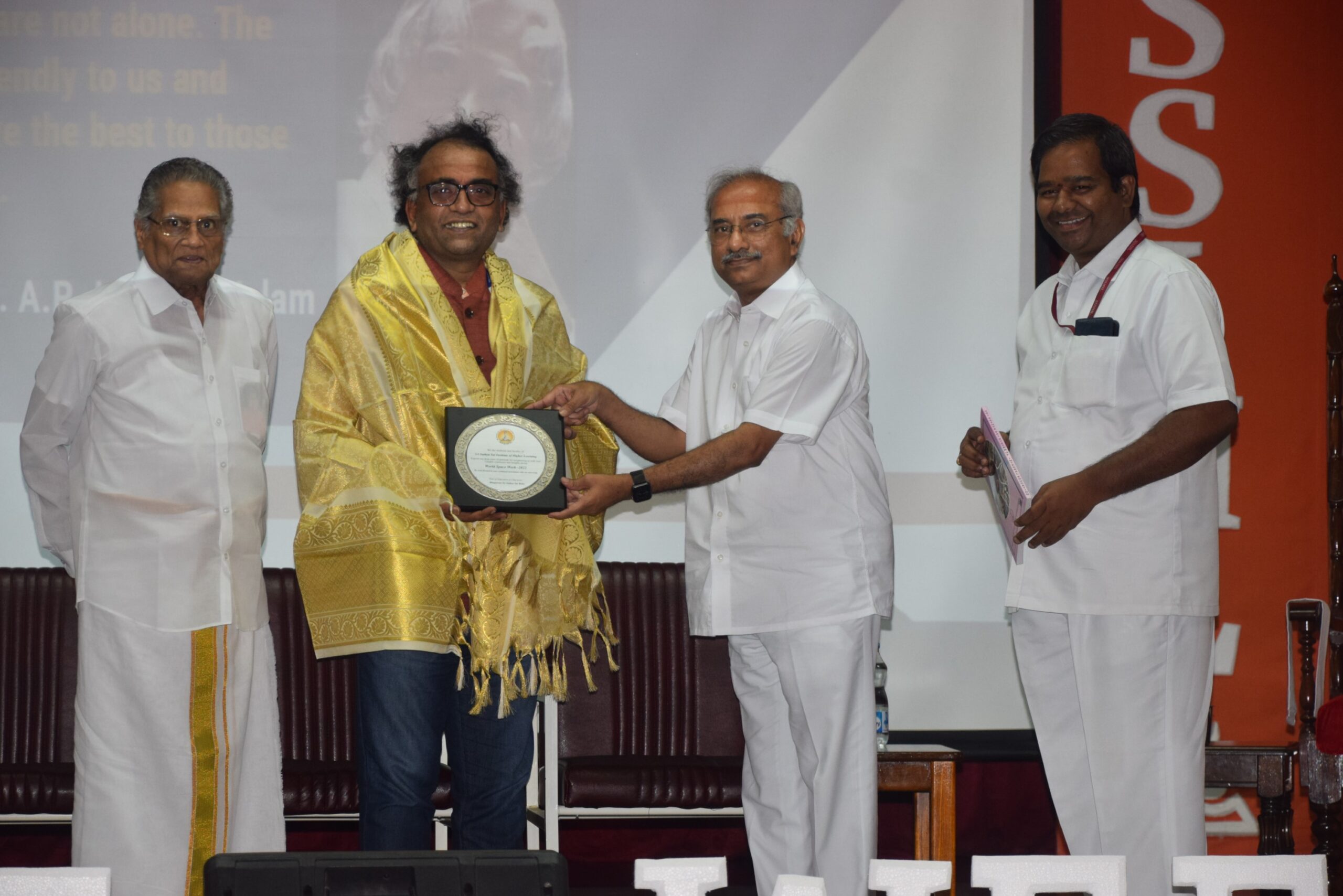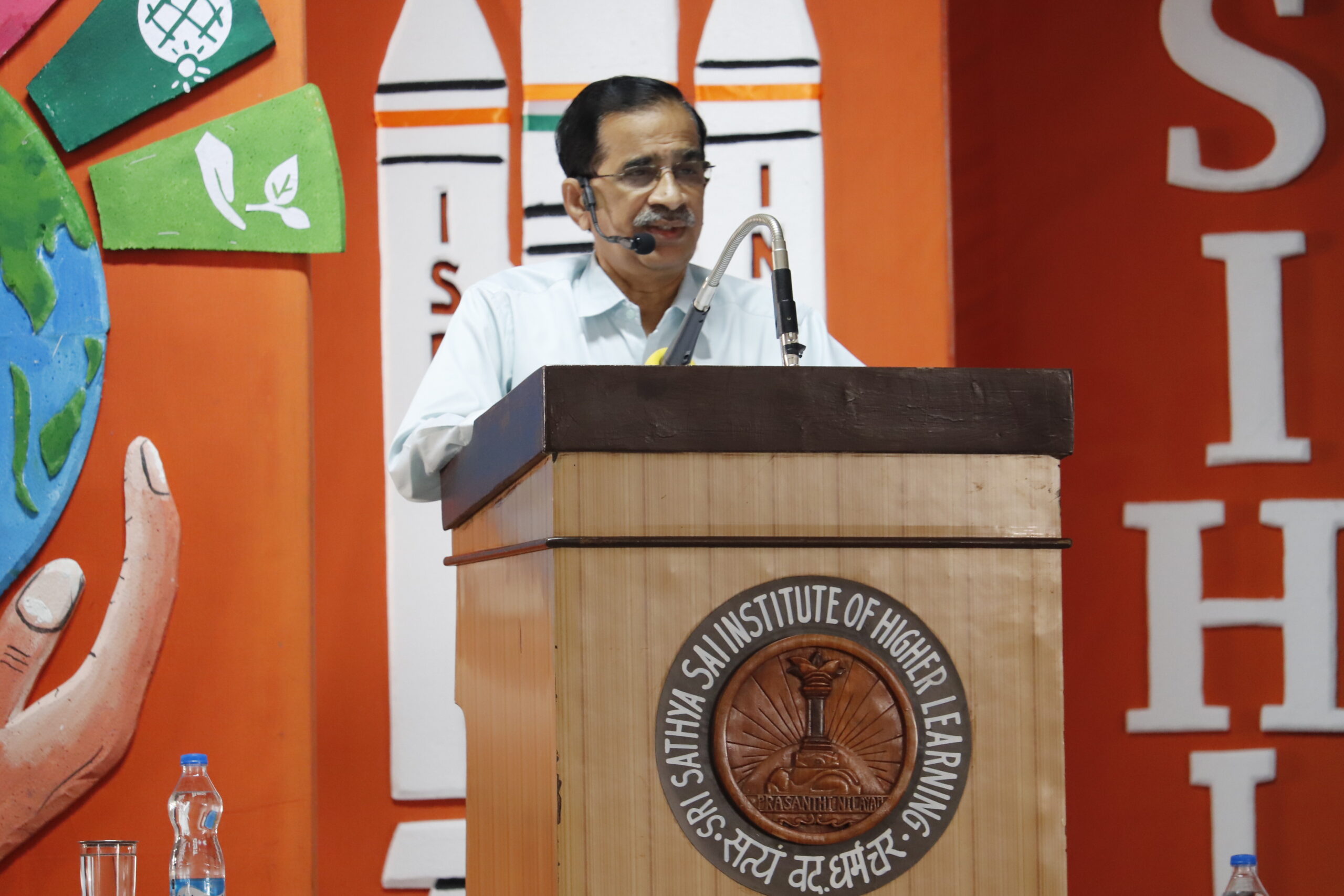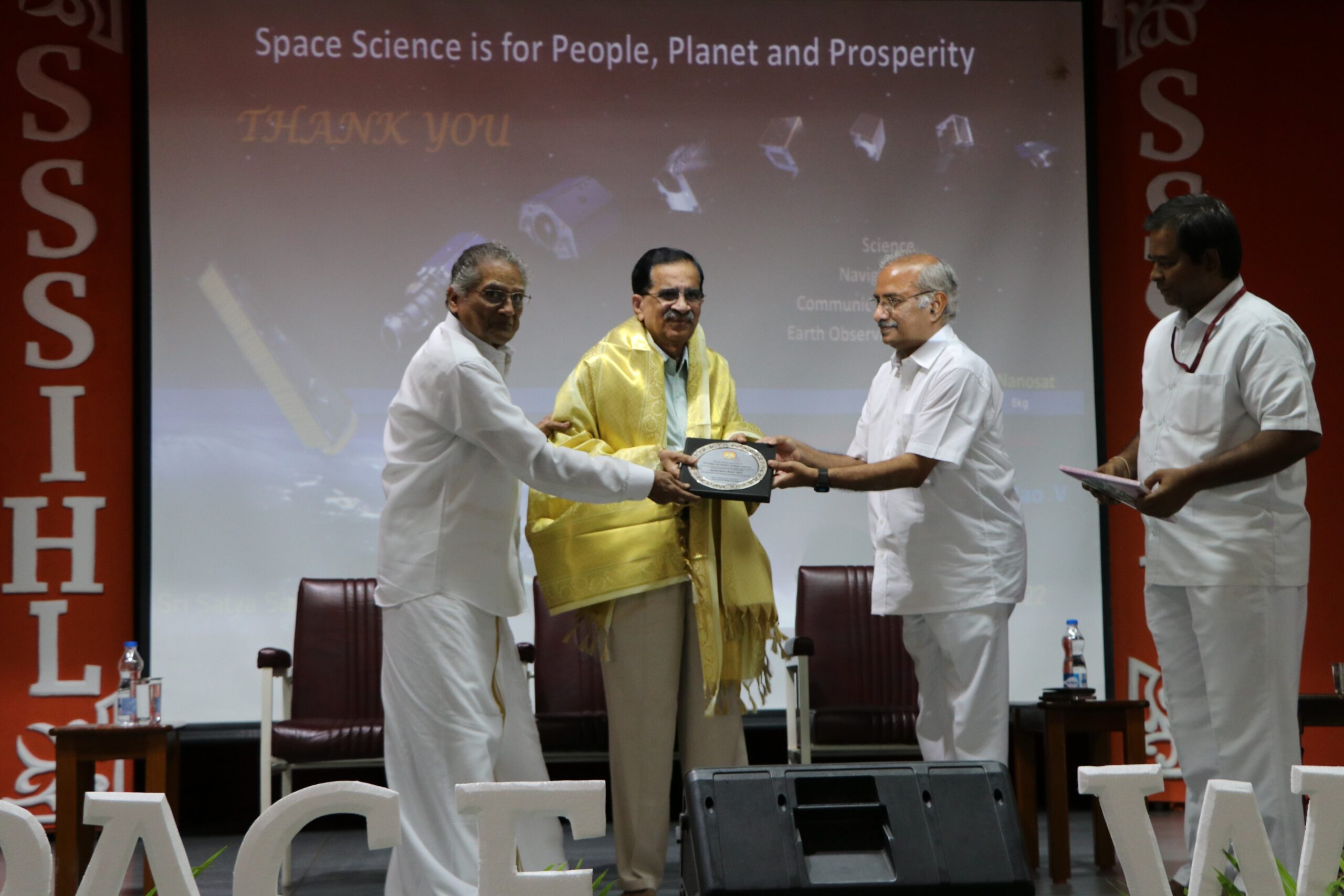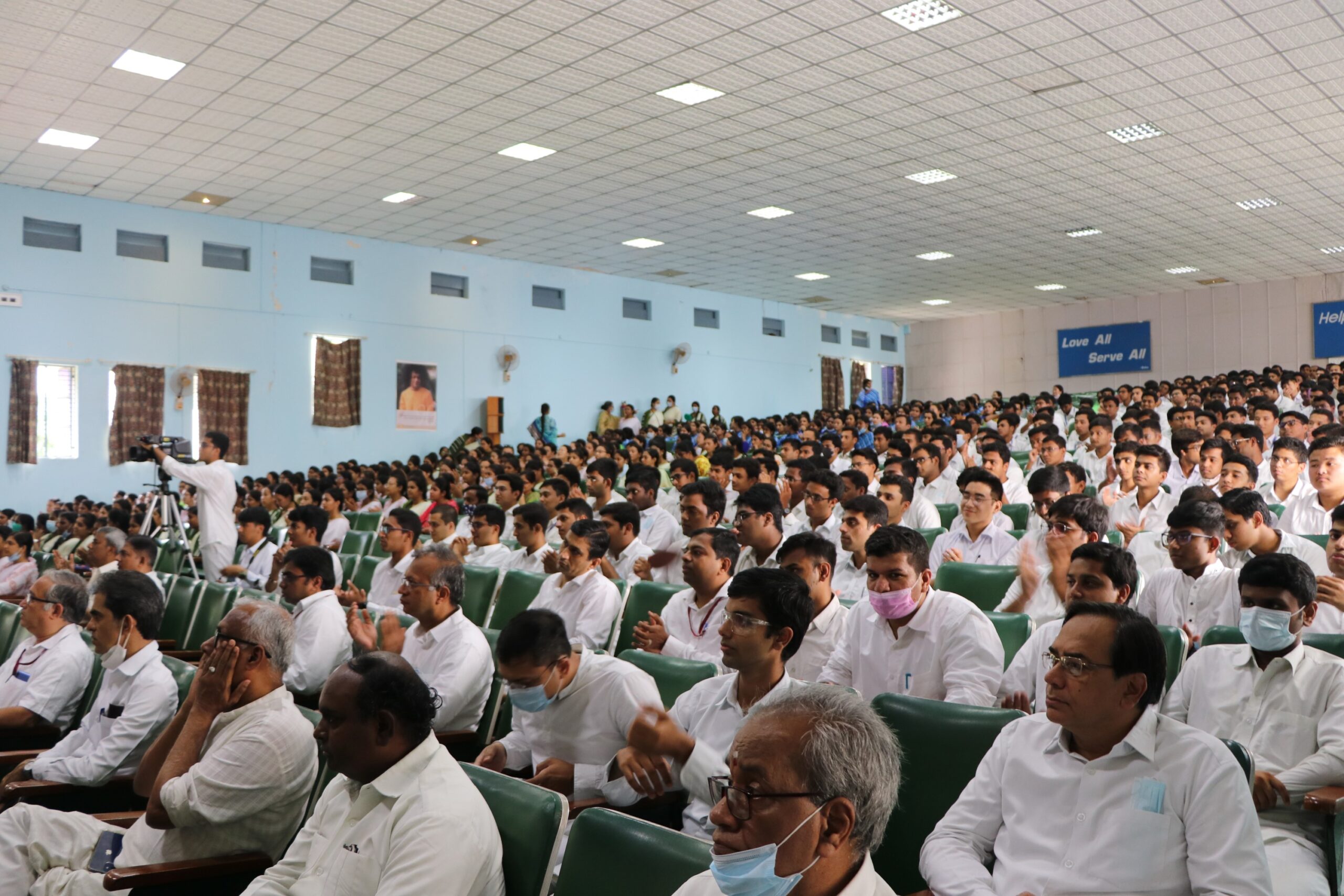Prasanthi Nilayam, 03 October 2022:
Three eminent Scientists from ISRO Dr. V. Seshagiri Rao, Fmr. Distinguished Scientist and Fmr. Associate Director, SDSC, ISRO, Mrs. Nandini Harinath, Deputy Director, Spacecraft Operations, ISRO, and Dr. R. Umamaheswaran, Distinguished Scientist & Director HSFC, ISRO. participated in the Vistas in Space Science event held on 03 October 2022 in Prasanthi Nilayam campus of Sri Sathya Sai Institute of Higher Learning.
Dr. V. Seshagiri Rao spoke to the students on the topic ‘Making of Mini, Micro, and Nano Satellites and Applications Scenario. He began by giving a wonderful bird’s eye view of the vastness of the universe and how insignificant human efforts are in understanding the creation, despite glorious achievements over the decades. Dwelling on the Satellites and their applications he stressed the importance of size which he said is a function of mass, time cost, and utility.
Ocean mapping, research, urban and regional planning, water resource management, weather forecast, environmental monitoring, bushfire mapping, forestry, road mapping, horticulture, infrastructure, and land management, energy resources, and emergency and disaster response are several satellite applications Dr. V. Seshagiri Rao shared in addition to broadband mapping globally, and communication.
The biggest players in satellite making he said are private organisations and universities followed by space agencies, military, non-profits, institutes, schools, and individuals. 1157 satellites of 1853 planned have been launched by companies and Universities have launched 563 satellites of 1044 planned so far. Giving the students a glimpse of the scheduling and budgeting of making and launching satellites, Dr. V. Seshagiri Rao said satellites can be made for as less as 2000 USD today.
The second speaker Mrs. Nandini Harinath spoke on ‘Glimpses of ISRO’s Inspiring Mission’. She touched upon the GPS Aided Geo Augmented Navigation (GAGAN) and Indian Regional Navigation Satellite System (IRNSS), Search and Rescue distress system through COSPAS-SARSAT. An important part of her talk revolved around Space Debris mitigation which aimed to reduce the creation of new debris and active Debris removal aimed to reduce the re-entry period of selected space debris and transport the target into a graveyard orbit. She highlighted how way back in 2007, India entered the elite club of countries having re-entry technology. She spoke about the PSLV C7 / SRE Mission which deployed recovery systems and ensured successful recovery on re-entry.
Speaking about the future missions, Mrs. Nandini Harinath said that NISAR a joint earth observation mission between NASA and ISRO will carry radars that will measure the Earth’s ecosystem collecting data on melting glaciers, rising ocean levels, tectonic plates movement of the earth, and more, and will be one of the most expensive satellites ever made. Aditya L1, due for launch in 2023, will observe and study the sun.
Mrs. Nandini Harinath then spoke on the popular Mars Orbiter Mission (MOM) India’s first interplanetary mission. She outlined the challenges of the mission as – developing hardware to survive in the martian environment, deep space communication, and most important the short launch window of 18 months from project approval to launch, so that the mission is launched when Mars is 46 degrees ahead of the earth which was critical to its success. Mrs. Nandini Harinath said, that learning from mistakes made by others was critical to success in the first mission itself.
Dr. R. Umamaheswaran spoke on “Indian Space Odyssey – Sounding Rockets till Gaganyaan”. He highlighted the importance of the first sounding rocket launched from Thumba Equatorial Rocket Launching System (TERLS), Kerala in 1963 and spoke about the expansion of ISRO in the 1970s. ISRO, he said was always open to collaboration with Industry and International agencies. The 1970s and 1980s he said were an era of satellite launches – from Aryabhata in 1975 to Bhaskara 1 and 11 in 1979 and 1981, APPLE in 1981, the INSAT Series and RS D1 and D2, and IRS -1A.
Dr. R. Umamaheswaran shared how India improved its launch capability from SLV and ASLV to PSLV and GSLV. The PSLV he said was a quantum jump in making the next-gen launch vehicle that has seen over 53 launches including Chandrayaan and MOM and several international launches. He said the evolution of the Indian Space programme can be categorised into 4 phases – Initiation Phase (the 1960s-70s), Experimental Phase (1980s), Operational Phase (1990s), and Expansion phase (2000s). He then took the audience through all the major milestones of India’s space programme. He even touched upon the GSLV D5 mission for which he was the vehicle Director and the struggles and joy of finding success at the end. Dr. R. Umamaheswaran spoke about how the PSLV C37 launched 104 satellites creating a world record. Talking about satellite applications, he highlighted how remote sensing data today is being used very effectively to help the common man and shared a host of Communication and Navigation applications.
Speaking on Gaganyaan, Dr. R. Umamaheswaran said the thought process for human space flight started in 2002. The study and research over the years translated to a pre-project team in 2011 and finally the announcement of India’s first manned mission Gaganyaan programme. He took the audience deep into the design and architecture of the vehicle highlighting the Crew Escape System (CES) at the top, in case of any eventualities during the launch. The initial mission he said is designed for 3 days.
He highlighted the role of IN SPACE started by the Government of India to have a single window interface for industry, academia, and private institutions and to support their active participation.
The speakers were felicitated at the end of their talks by the Chancellor, Shri K. Chakravarthi and the Vice Chancellor Prof. (Dr.) Carani Sanjeevi of Sri Sathya Sai Institute of Higher Learning.
For the students and faculty, it was an unforgettable experience that has left them highly inspired.
The event was streamed live on the SSSIHL YouTube Channel:
Session 1: https://youtu.be/foADz5DpEuk
Session 2: https://youtu.be/rsxmGLPc92s


